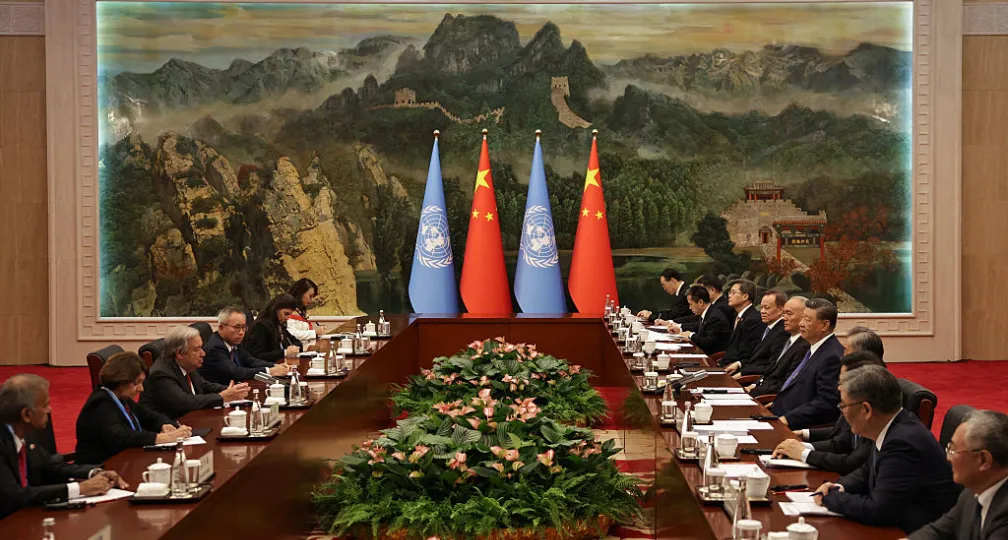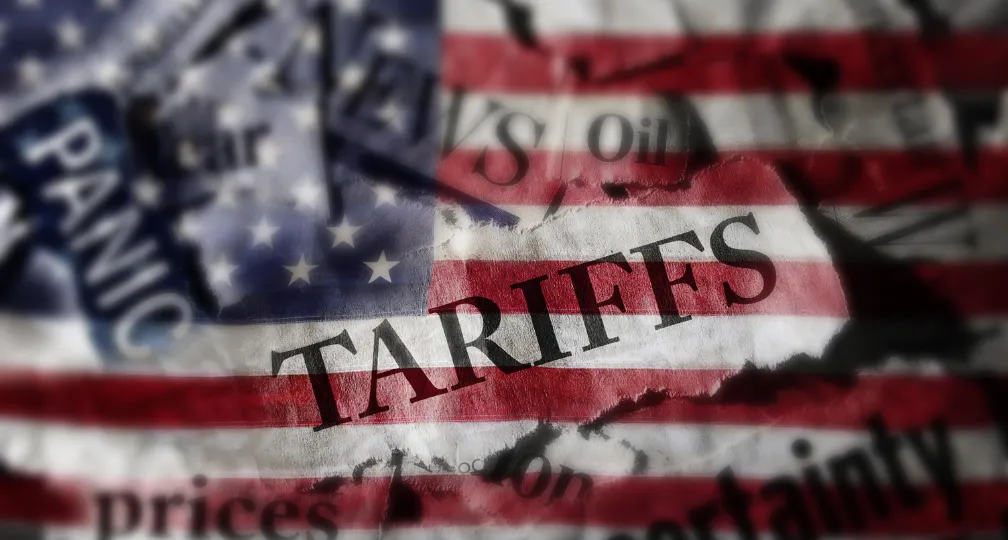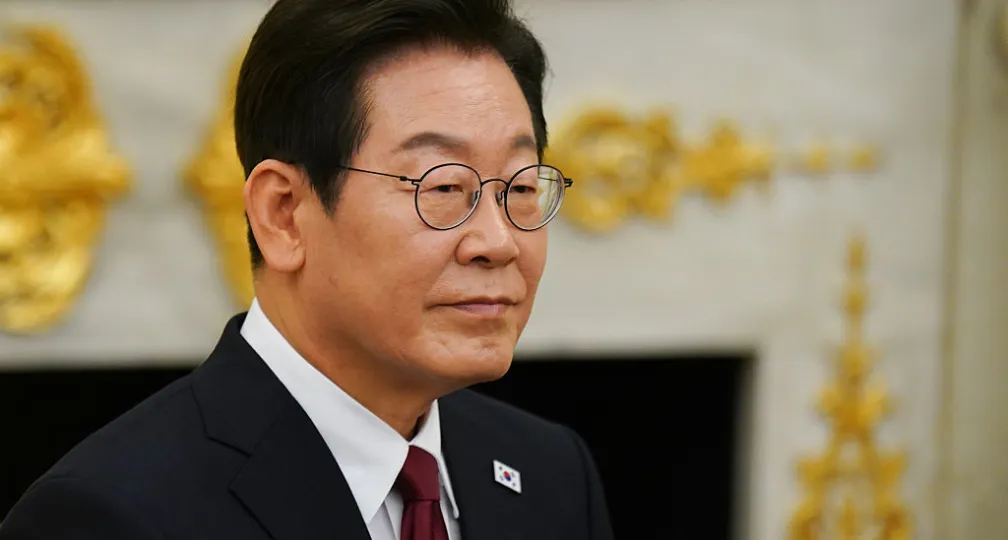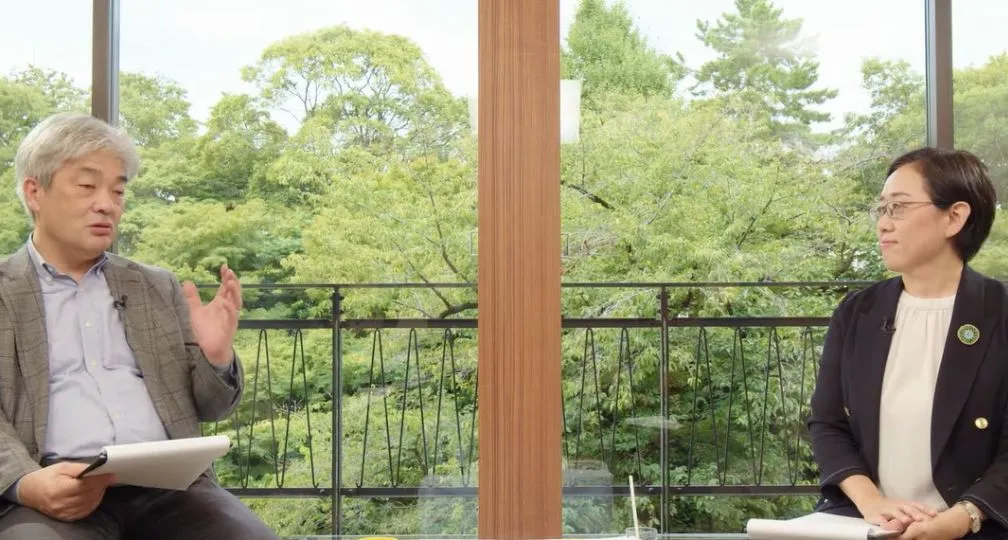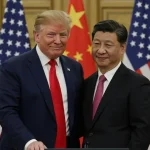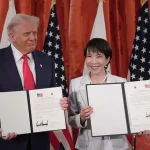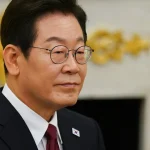The Big Continuity in Trump’s International Economic Policy
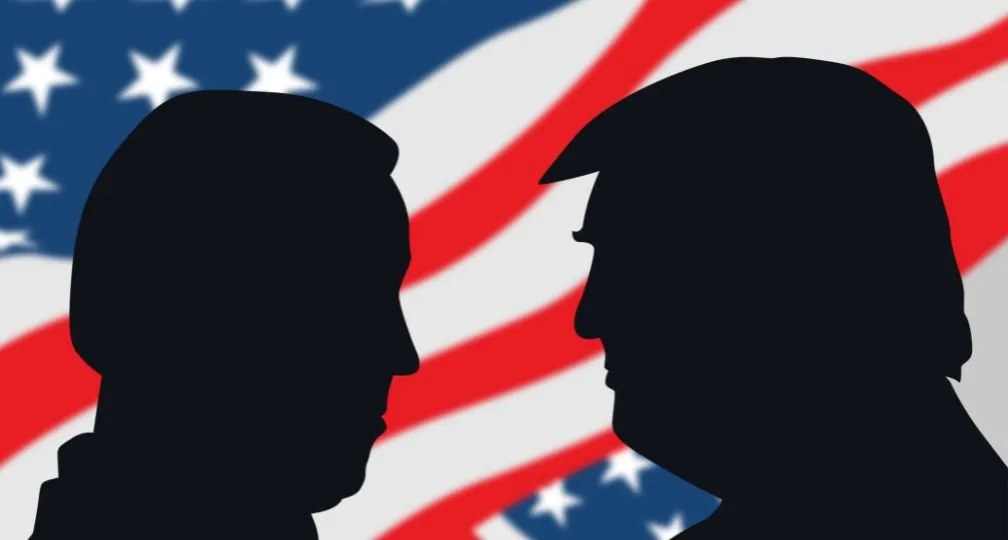
The latest regulatory developments on economic security & geoeconomics
By Paul Nadeau, Visiting Research Fellow, Institute of Geoeconomics (IOG)
Trump Hikes Steel Tariffs: On June 4, Donald Trump issued an executive order increasing steel & aluminum tariffs to 50 percent. The tariffs were imposed under Trump’s first administration under Section 232 of the 1962 Trade Expansion Act. The move is the latest sign that Trump plans to continue relying on tariffs as a key tool of trade policy despite the court decisions ruling that his imposition of tariffs under the International Economic Emergency Powers Act of 1977 was illegal (a stay has allowed the April 2 tariffs to remain in place pending the appeals process which is ongoing).
U.S. to Expand Restrictions on Chinese Firms?: Bloomberg reported that the Trump administration is considering rules to expand restrictions on China’s tech sector by extending restrictions to subsidiaries of restricted Chinese companies. More specifically, firms that are already included on the U.S. Commerce Department’s Entity List, Military End-User List, and Specially Designated Nationals List would see their majority-owned firms subject to the same licensing requirements on transactions.
Treasury Secretary Bessent Concerned with China Trade Truce: In a televised interview on June U.S. 1, Treasury Secretary Scott Bessent accused China of violating their trade truce with the United States by continuing to restrict the export of critical minerals that it agreed to release during the May negotiations. In April, China announced that it would restrict exports of a wide range of minerals and magnets critical to supply chains in the automotive, aerospace, semiconductor, and military sectors worldwide, and China’s restrictions have sparked concerns over shortages and supply chain disruptions.
U.S., EU Ease Economic Restrictions on Syria’s New Government: The U.S. Treasury Department issued a general license authorizing transactions prohibited by the Syrian sanctions regulations or involving certain blocked persons, and the European Council moved to lift all non-security related economic restrictions on Syria on May 28. Both sets of moves are intended to support the new regime in Syria following the imposition of sanctions on the Asad regime during Syria’s civil war from 2011-2024.
U.S. Sanctions Sudan: On May 22, the U.S. State Department announced that it will impose sanctions on Sudan, including restrictions on U.S. exports to Sudan and on access to U.S. government lines of credit, for its use of chemical weapons in 2024.
Analysis: The Big Continuity in Trump’s International Economic Policy
Take away the IEEPA tariffs, and the Trump administration’s international economic strategy is almost conventional. Or at least, it’s consistent with the direction that U.S. economic statecraft has been headed over the last two decades towards greater reliance on sanctions, export controls, and other tools of economic coercion. While the preference for high-paced, decisive action may be distinctly Trumpian, the tools and objectives are familiar. But f the good news is that there’s continuity, the bad news is the same mistakes as previous administrations will probably be repeated.
The continuity with past administrations will certainly be familiar to anyone who follows sanctions policy. The sanctions programs toward Iran have continued and are focused patching up gaps and closing loopholes in the existing sanctions regime. This is consistent with most recent U.S. administrations and Trump’s efforts are building on previous ones, particularly targeting Iran’s oil shipments to China and Iran-backed militias as part of efforts to address Iran’s nuclear program or to combat its regional influence, particularly in Yemen. Export controls are another continuing theme – for all of the cuts to government either due to DOGE or from Trump’s budget request, the Commerce Department’s Bureau of Industry & Security (BIS), the office responsible for managing national security risks from exports, received a budget increase by $132 million or 77 percent for Fiscal Year 2026. It’s a dramatic raise, but also consistent with the office’s budget over the last few years as administrations have grown more aware and more concerned about the role of potential dual-use or military end-use exports going to countries of concern.
There are also differences. For one, the recission of the Biden administration’s AI chip control rules, regulated exports under a tiered system for all countries, suggests a meaningfully different approach to managing export controls of advanced technologies. While the Trump administration’s new rules have not yet been released at the time of writing, the series of agreements made during Trump’s May visit to the Middle East may provide a preview of their new rules, where a series of agreements were signed bilaterally and agreements with the private sector were facilitated. If this is the template, it would be consistent with Trump’s general preference for bilateral engagement rather than multilateral, but questions remain as to how these advanced chips would be secure from transshipment to China or other countries of concern, an issue that wasn’t addressed much during Trump’s visit.
While there may be much to the Trump administration’s strategy that’s more conventional, the challenges presented by the conventional strategy remain. Language in Trump’s budget request such as “targeted investments to strengthen trade enforcement and aggressively protect American innovation” strongly suggest preference for economic security tools rather than trade facilitation, which may not be surprising given Trump’s general outlook but are still a concrete demonstration of his administration’s priorities.
Getting allies on board will also remain a challenge. The Biden administration encountered this the hard way when its first round of export controls in October 2022 was initially met with a chill by allies, particularly Japan and the Netherlands whose companies made their compliance essential for the export controls to work, but whose companies also depended on business in China. Both countries eventually joined on to the effort, and the Biden administration was more careful to consult with stakeholders before announcing new export controls, even if it may have delayed the process. That approach of prior consultation is far less in the Trump administration’s style, and if they want to move quickly on export controls, they won’t wait for permission from stakeholders.
There are also new challenges. While BIS may have gotten a budget increase, other offices that address trade policy such as the International Trade Administration’s global markets program have seen budget cuts. Replacing a professional class of bureaucrats with partisan staffers not only reduces institutional memory and expertise but also requires stakeholders to relearn their contacts and their preferences with each new administration, making it harder for companies to predict the future of policy. While it’s normal and good for administrations to change their approach to major policy questions, dramatic or sudden changes with little transparency introduces uncertainty which in turn will reduce the effectiveness of future policies as countries and the private sector seek more predictable workarounds at the expense of U.S.-centered networks. After all, it’s not clear if successive U.S. administrations would maintain Trump’s bilateral framework or if they would revert to a multilateral model like that in the Biden administration.
Finally, it’s still not clear how much these tools of economic coercion are effective in achieving their goals, either in Trump’s hands or anyone’s. Export controls and sanctions still seem to be a surrogate for a more comprehensive strategy toward major questions and are seen by many in Washington as an easy, low-cost tool for addressing national security challenges. Yet China continues to develop advanced technology despite export controls and Iran continues to maintain a nuclear program despite “maximum pressure” campaigns. There are limits to what sanctions and export controls can achieve – just as Russia is able to continue its invasion of Ukraine despite historic economic and financial sanctions. Like every administration before it, the Trump administration will eventually be confronted with the question of what to do when economic coercion loses its efficacy.
(Photo Credit: Shutterstock)
Disclaimer: The views expressed in this IOG Economic Intelligence Report do not necessarily reflect those of the API, the Institute of Geoeconomics (IOG) or any other organizations to which the author belongs.
API/IOG English Newsletter
Edited by Paul Nadeau, the newsletter will monthly keep up to date on geoeconomic agenda, IOG Intelligencce report, geoeconomics briefings, IOG geoeconomic insights, new publications, events, research activities, media coverage, and more.


Visiting Research Fellow
Paul Nadeau is an adjunct assistant professor at Temple University's Japan campus, co-founder & editor of Tokyo Review, and an adjunct fellow with the Scholl Chair in International Business at the Center for Strategic and International Studies (CSIS). He was previously a private secretary with the Japanese Diet and as a member of the foreign affairs and trade staff of Senator Olympia Snowe. He holds a B.A. from the George Washington University, an M.A. in law and diplomacy from the Fletcher School at Tufts University, and a PhD from the University of Tokyo's Graduate School of Public Policy. His research focuses on the intersection of domestic and international politics, with specific focuses on political partisanship and international trade policy. His commentary has appeared on BBC News, New York Times, Nikkei Asian Review, Japan Times, and more.
View Profile-
 India - Japan: The Glimpse of a Shared Vision2025.12.05
India - Japan: The Glimpse of a Shared Vision2025.12.05 -
 Beijing’s ‘Globalist’ Agenda Under Trump 2.02025.12.01
Beijing’s ‘Globalist’ Agenda Under Trump 2.02025.12.01 -
 Trump’s Tariffs Might Be Here to Stay – No Matter Who’s in Power2025.11.28
Trump’s Tariffs Might Be Here to Stay – No Matter Who’s in Power2025.11.28 -
 The long road to a South Korea-U.S. trade deal2025.11.26
The long road to a South Korea-U.S. trade deal2025.11.26 -
 Event Report: The Trump Tariffs and Their Impact on the Japanese Economy2025.11.25
Event Report: The Trump Tariffs and Their Impact on the Japanese Economy2025.11.25
 Event Report: The Trump Tariffs and Their Impact on the Japanese Economy2025.11.25
Event Report: The Trump Tariffs and Their Impact on the Japanese Economy2025.11.25 The Real Significance of Trump’s Asia Trip2025.11.14
The Real Significance of Trump’s Asia Trip2025.11.14 Can Takaichi Build on a Successful Summit?2025.10.31
Can Takaichi Build on a Successful Summit?2025.10.31 The long road to a South Korea-U.S. trade deal2025.11.26
The long road to a South Korea-U.S. trade deal2025.11.26 India’s Structural Reforms: Opportunities and Risks2025.11.14
India’s Structural Reforms: Opportunities and Risks2025.11.14



